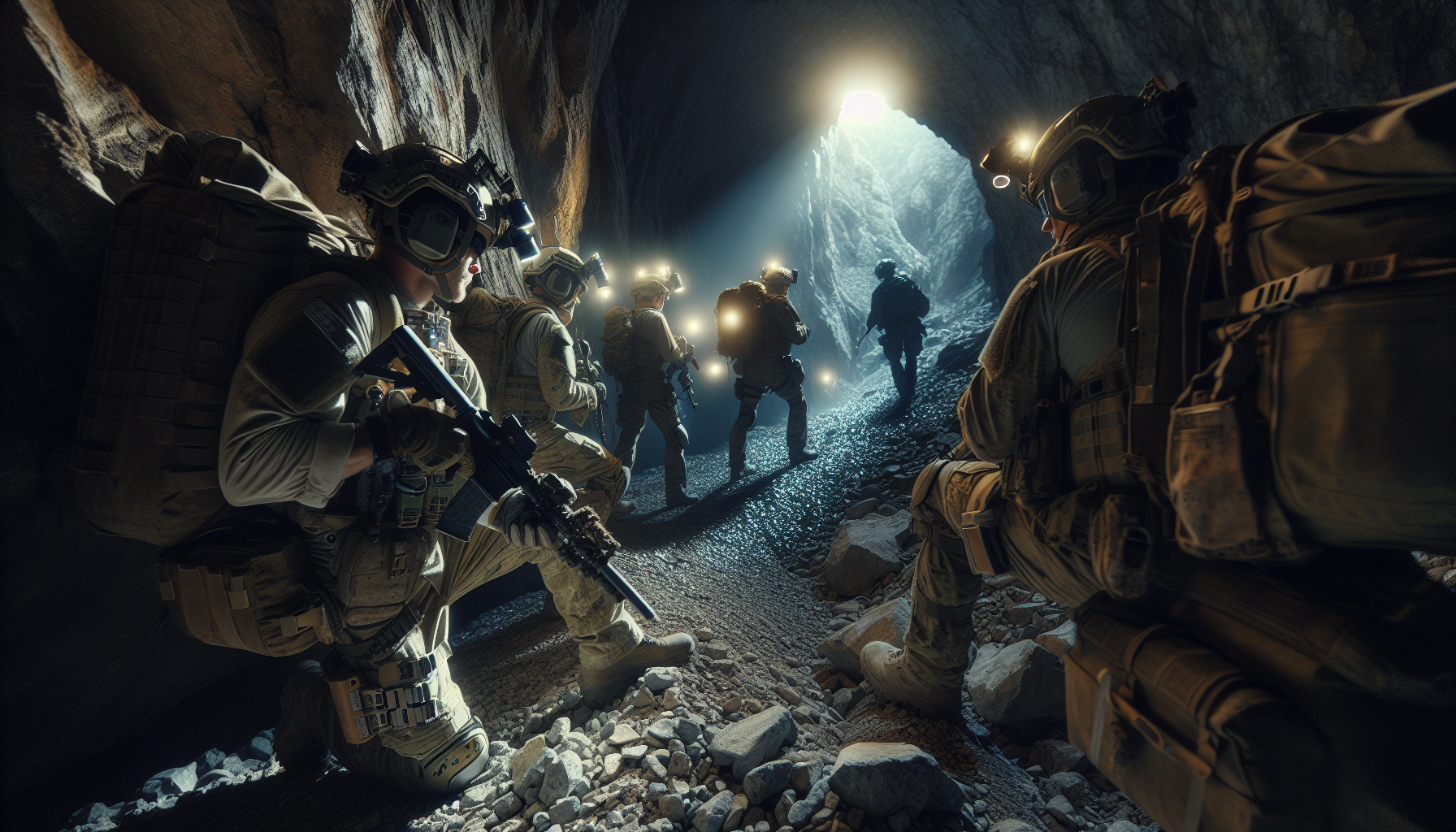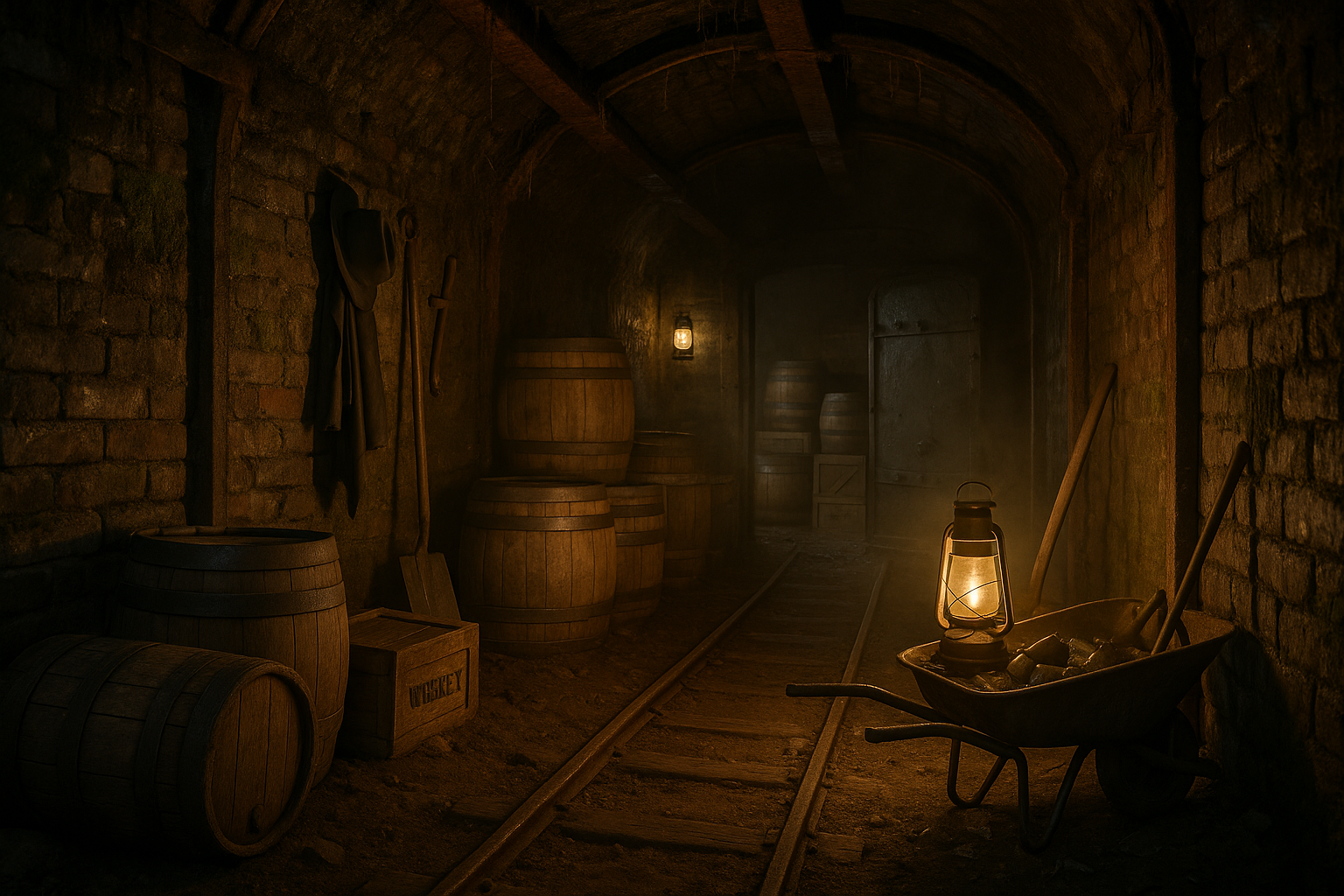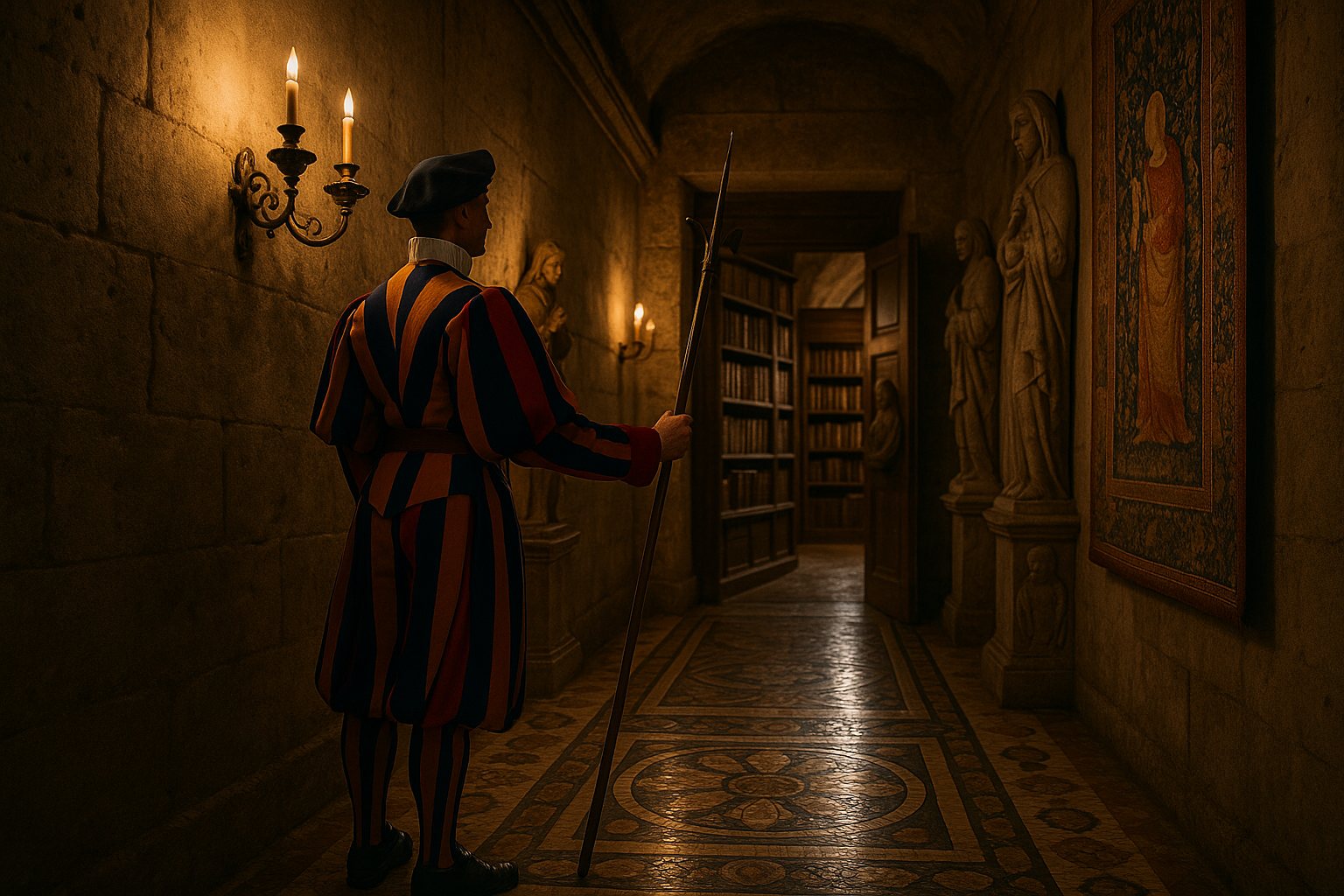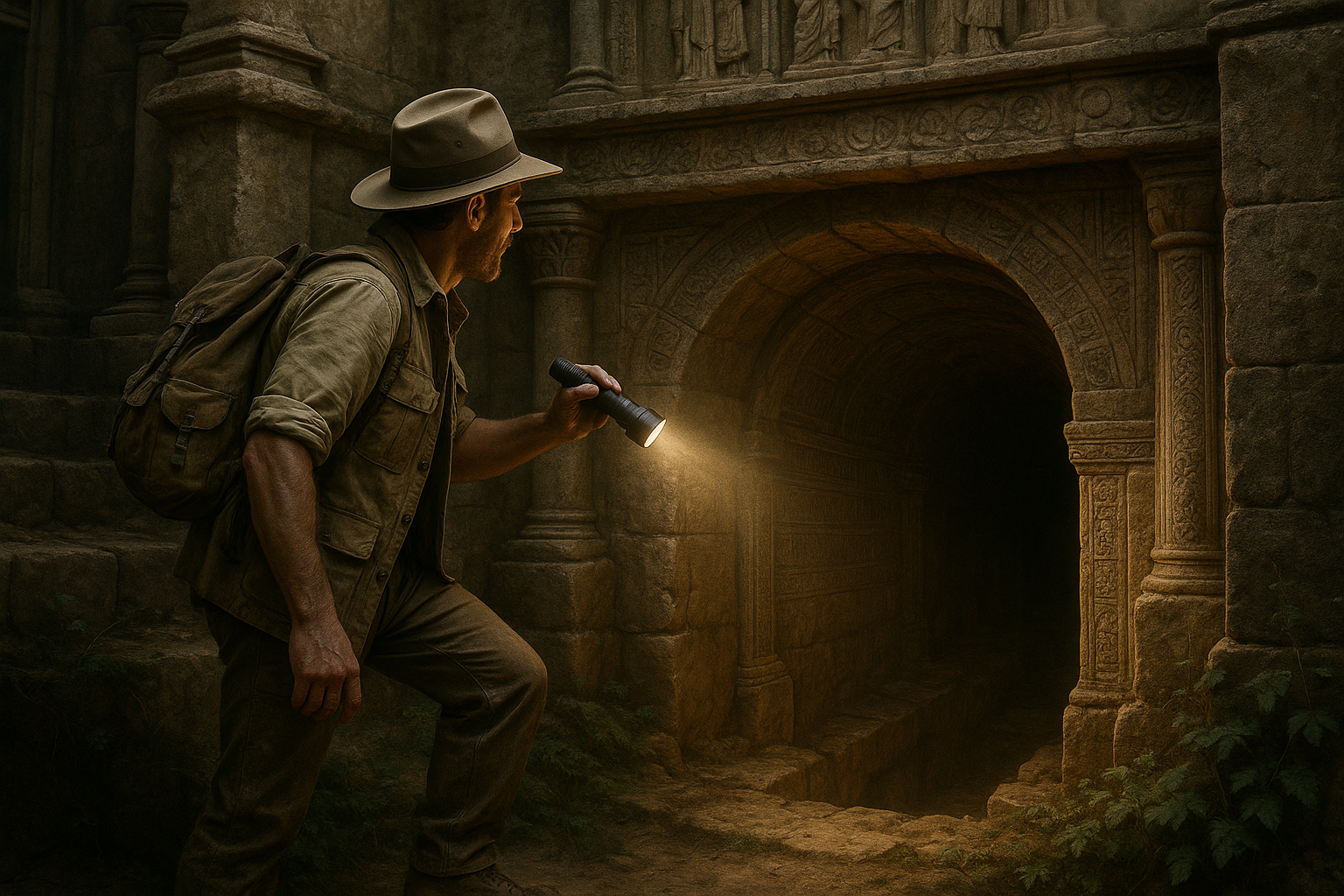In the vast tapestry of human history, soldiers have always been at the forefront, enduring the harshest of conditions and bravely facing the unknown. From the scorching deserts of North Africa to the icy tundras of Siberia, their environments have varied dramatically, each presenting its own unique set of challenges. Yet, there exists a realm so mysterious and untold, it remains largely hidden from the public eye: the subterranean world. Deep beneath the surface, soldiers navigate a labyrinth of tunnels, caves, and bunkers, where daylight is a luxury and silence is both a friend and foe. In this article, we delve into the enigmatic life of soldiers who inhabit these underground domains, uncovering the realities they face and the adaptations they must make to survive in such an unforgiving environment.
The notion of subterranean warfare might conjure images of dimly lit passages and claustrophobic quarters, but the reality is far more complex and multifaceted. These underground spaces are not just confined to natural formations but also include man-made structures designed for strategic advantage. Throughout history, from the ancient catacombs of Rome to the intricate tunnel systems of Vietnam, subterranean environments have been utilized for concealment, movement, and tactical surprise. In our exploration, we will examine the historical evolution of underground warfare, highlighting key moments where soldiers have turned the tide of battle from beneath the earth’s crust.
Beyond the historical perspective, this article will also shed light on the psychological and physical toll that subterranean environments impose on soldiers. The absence of natural light, the omnipresent dampness, and the constant threat of enemy encounters create a unique set of stressors. We will delve into how soldiers cope with these challenges, drawing on insights from military psychologists and firsthand accounts from those who have experienced life underground. Furthermore, we’ll discuss the technological advancements and training methods that prepare soldiers for such demanding conditions, offering a glimpse into the future of subterranean warfare.
As we journey through this hidden world, we invite you to join us in uncovering the secrets that lie beneath our feet. From the stories of valor and resilience to the innovative strategies employed in these confined spaces, this exploration promises to be as intriguing as it is enlightening. Whether you’re a military enthusiast, a history buff, or simply curious about the unknown, this article will offer a comprehensive look at a world seldom seen but crucially significant. So, fasten your seatbelt and prepare to descend into the depths of the earth, where the courage and ingenuity of soldiers shine brightest. 🌍🔦
The Mysterious World Beneath the Surface
When most people think of military operations, they envision soldiers marching across open fields or navigating dense jungles. However, a lesser-known but equally critical aspect of military strategy involves subterranean environments. This hidden world beneath the surface presents unique challenges and demands specialized skills and equipment from soldiers. The life of soldiers in these underground environments is as intriguing as it is demanding, requiring a deep understanding of the physical and psychological challenges they face.
Subterranean environments can vary widely, from natural caves and tunnels to urban underground networks such as subways and sewers. These environments offer strategic advantages in terms of concealment and protection from aerial surveillance, but they also pose significant risks. The confined spaces, lack of natural light, and complex layouts can disorient even the most seasoned soldiers. Moreover, the potential for structural instability, poor air quality, and unexpected encounters with the enemy adds to the danger.
The modern battlefield increasingly involves these subterranean elements, prompting military forces to adapt their tactics and training accordingly. Soldiers are equipped with advanced technologies such as night vision goggles, communication devices, and specialized breathing apparatus to navigate these challenging spaces. Additionally, military engineers play a crucial role in mapping and stabilizing these environments to ensure safe passage and strategic advantage. 📡
Training and Preparation: A Soldier’s Arsenal
Preparing soldiers for operations in subterranean environments requires rigorous training and an arsenal of specialized equipment. The training process focuses on both the physical and psychological aspects of subterranean warfare. Soldiers undergo extensive physical conditioning to build the endurance needed for operating in confined spaces, often carrying heavy gear while navigating through narrow tunnels and passages.
Moreover, psychological resilience is equally important. The isolation, darkness, and potential for surprise encounters in underground environments can be mentally taxing. Soldiers are trained to maintain their composure and make quick decisions under stress. This training often involves simulated exercises that mimic the conditions of subterranean warfare, allowing soldiers to practice navigation, communication, and combat techniques in a controlled setting.
| Equipment | Function |
|---|---|
| Night Vision Goggles | Enable visibility in complete darkness |
| Thermal Imaging Cameras | Detect heat signatures through obstacles |
| Ground-Penetrating Radar | Identify underground structures and threats |
| Specialized Breathing Apparatus | Provide safe breathing in low oxygen environments |
Assista ao vídeo abaixo para uma visão mais detalhada sobre a preparação dos soldados para ambientes subterrâneos: Military Subterranean Training – Real Life Heroes
The Psychological Impact of Subterranean Warfare
The psychological effects of operating in subterranean environments can be profound. The lack of natural light, constant exposure to darkness, and the confined nature of tunnels can contribute to feelings of claustrophobia and anxiety. Soldiers must learn to overcome these mental hurdles to perform effectively.
Communication and camaraderie play crucial roles in mitigating the psychological stress associated with subterranean warfare. Team cohesion and mutual support among soldiers help maintain morale and ensure that each team member remains focused on the mission objectives. Regular debriefings and psychological support services are essential components of military operations, providing soldiers with opportunities to process their experiences and address any mental health concerns.
The military also employs advanced simulation technologies to prepare soldiers for the psychological challenges of subterranean operations. Virtual reality environments can replicate the sights, sounds, and sensations of underground spaces, allowing soldiers to acclimate to these conditions before deploying. These simulations not only enhance operational readiness but also provide valuable insights into the cognitive and emotional responses of soldiers, helping to refine training protocols.
Technological Innovations and Advancements
The technological landscape of subterranean warfare is constantly evolving. Innovations in robotics, surveillance, and communication are transforming the way military operations are conducted below the surface. Unmanned ground vehicles (UGVs) equipped with cameras and sensors can navigate tunnels and gather intelligence without risking human lives. These robotic systems are particularly useful in identifying potential threats and mapping unfamiliar environments.
Advancements in communication technology have also improved the effectiveness of subterranean operations. Modern communication systems utilize advanced signal processing techniques to overcome the challenges posed by underground environments, ensuring that soldiers can maintain contact with their units and receive critical information in real-time.
Additionally, the development of lightweight, portable power sources has enhanced the mobility of soldiers and their equipment. Rechargeable batteries and energy-efficient devices allow soldiers to operate for extended periods without the need for frequent resupply, providing a significant tactical advantage in prolonged subterranean missions.
| Technology | Advantage |
|---|---|
| Unmanned Ground Vehicles (UGVs) | Remote surveillance and threat detection |
| Advanced Communication Systems | Reliable communication in challenging environments |
| Portable Power Sources | Extended operational capabilities |
Challenges and Opportunities
The subterranean battlefield presents both challenges and opportunities for military forces. The complex and unpredictable nature of these environments requires adaptability and innovation. Military planners must continually assess the risks and develop strategies that leverage the unique advantages of subterranean spaces while mitigating potential threats.
One of the primary challenges is the difficulty of maintaining situational awareness in such environments. The limited visibility and narrow passages can obscure potential threats, requiring soldiers to rely on technology and intuition to make informed decisions. Additionally, the logistics of operating underground, including the transport of supplies and equipment, can be complicated by the confined spaces and difficult terrain.
Despite these challenges, subterranean environments offer significant strategic opportunities. The ability to move undetected and establish secure positions can provide a decisive advantage in combat scenarios. By harnessing the power of technology and innovative tactics, military forces can turn the complexities of subterranean warfare into an asset, enhancing their overall operational effectiveness. 🌍
- Adaptability is key in subterranean warfare.
- Technology plays a crucial role in maintaining situational awareness.
- Strategic use of underground environments can offer a tactical edge.

Conclusion
In conclusion, the exploration into the lives of soldiers operating within subterranean environments offers a fascinating yet sobering glimpse into a world often hidden from public view. Through our journey in this article, we’ve delved into various facets of subterranean military operations, from the strategic significance of these environments to the psychological and physical challenges faced by soldiers. The underground realm presents unique tactical advantages, allowing for stealth, protection, and an element of surprise that can be crucial in modern warfare. Yet, it is not without its perils, as soldiers must navigate confined spaces, limited communication, and potential threats from both the environment and adversaries.
One of the pivotal points discussed is the strategic value of subterranean operations. Historically, tunnels and underground bunkers have been used for surprise attacks, secure communication lines, and storage. In contemporary military strategy, these environments are leveraged for intelligence operations and as havens from aerial surveillance and attacks. However, the complexity of modern underground warfare necessitates advanced training and technology, underscoring the continuous evolution of military tactics.
We also explored the psychological impact on soldiers operating underground. The isolation, darkness, and confined spaces can lead to heightened stress and anxiety. The lack of natural light and fresh air can affect mental health, necessitating robust support systems and training to ensure soldiers’ well-being. It is crucial for military organizations to recognize and address these psychological challenges, providing resources to help soldiers adapt and cope with the unique pressures of subterranean environments.
Moreover, the technological advancements that facilitate subterranean operations were highlighted. From advanced mapping and communication tools to specialized equipment designed to function in limited spaces, technology plays a vital role in ensuring the success and safety of underground missions. Innovations such as robotic systems and enhanced surveillance equipment continue to push the boundaries of what is possible, allowing for more effective and efficient operations in these challenging environments.
The resilience and adaptability of soldiers are truly commendable. Despite the inherent challenges, they demonstrate an unwavering commitment to their missions, relying on teamwork, resourcefulness, and rigorous training to overcome obstacles. Their ability to operate under such demanding conditions speaks volumes about their dedication and professionalism.
Understanding the intricacies of subterranean warfare is essential not only for military strategists but also for the general public. It sheds light on the sacrifices and challenges faced by soldiers, fostering a deeper appreciation for their service. Moreover, as global security dynamics continue to evolve, awareness and knowledge about such specialized military operations become increasingly relevant.
The significance of this topic extends beyond military strategy. It invites broader discussions on the impact of warfare on human psychology, the role of technology in modern combat, and the ethical considerations of subterranean operations. As readers, we are encouraged to reflect on these aspects, fostering a more informed and empathetic perspective towards those who serve in such capacities.
To further explore this topic, readers can access a wealth of resources that provide additional insights and perspectives. For more in-depth information, the article “Subterranean Warfare and the Future of Global Security” from RAND Corporation offers a comprehensive analysis of the strategic implications of underground operations. Additionally, the U.S. Army’s TRADOC G-2 provides valuable resources on training and doctrine related to subterranean warfare.
In light of the insights gained from this article, we encourage readers to share their thoughts and engage in discussions about the hidden world of subterranean military operations. Your perspectives and questions can contribute to a broader understanding and appreciation of this complex subject. Feel free to comment below or share this article with others who might be interested in delving into the intricacies of this fascinating topic. By spreading awareness and knowledge, we can collectively deepen our understanding and support for those who serve in challenging and often underappreciated roles. 🌍🔍
Ultimately, the exploration of subterranean environments in military contexts opens a window into a world that is as intriguing as it is challenging. The bravery and resilience of soldiers who operate in these environments are a testament to human ingenuity and perseverance. Let us honor their service by continuing to learn, discuss, and share knowledge about their experiences and the evolving nature of warfare. Together, we can foster a more informed and empathetic world.
Toni Santos is a visual storyteller and artisan whose work explores the quiet power of what lies beneath. With a deep fascination for subterranean and hidden architecture, Toni uncovers the layers, voids, and forgotten spaces that shape our built environment from the shadows.
His art is a journey through the unseen — from ancient underground chambers to sealed passageways, service tunnels, and foundations buried in time. Each creation tells a story of silence, secrecy, and structure — revealing how absence and concealment can be just as meaningful as what’s visible above ground.
Whether working through visual compositions, architectural studies, or symbolic handcrafted pieces, Toni captures the soul of hidden spaces. His work bridges art and archaeology, blending design with discovery. Trained in visual design and traditional techniques, Toni creates with intention. His pieces don’t just depict — they interpret, inviting viewers to rethink what space, memory, and architecture mean when they’re hidden from view.
As the creative force behind Vizevex, Toni shares this perspective through curated visual narratives, symbolic collections, and interpretive essays that give voice to the quiet geometries beneath our feet.
His work is a tribute to:
The mystery of spaces built to be forgotten
The symbolism embedded in foundations, voids, and passageways
The timeless connection between human intention and hidden structure
Whether you’re an artist, an urban explorer, or someone fascinated by the unseen frameworks that support our world, Toni invites you into a realm where architecture becomes myth — one corridor, one layer, one buried story at a time.





